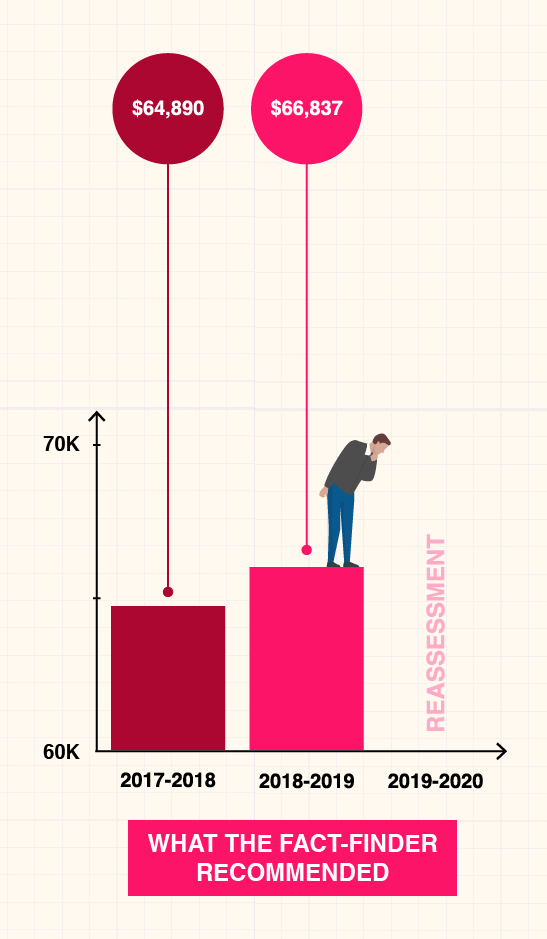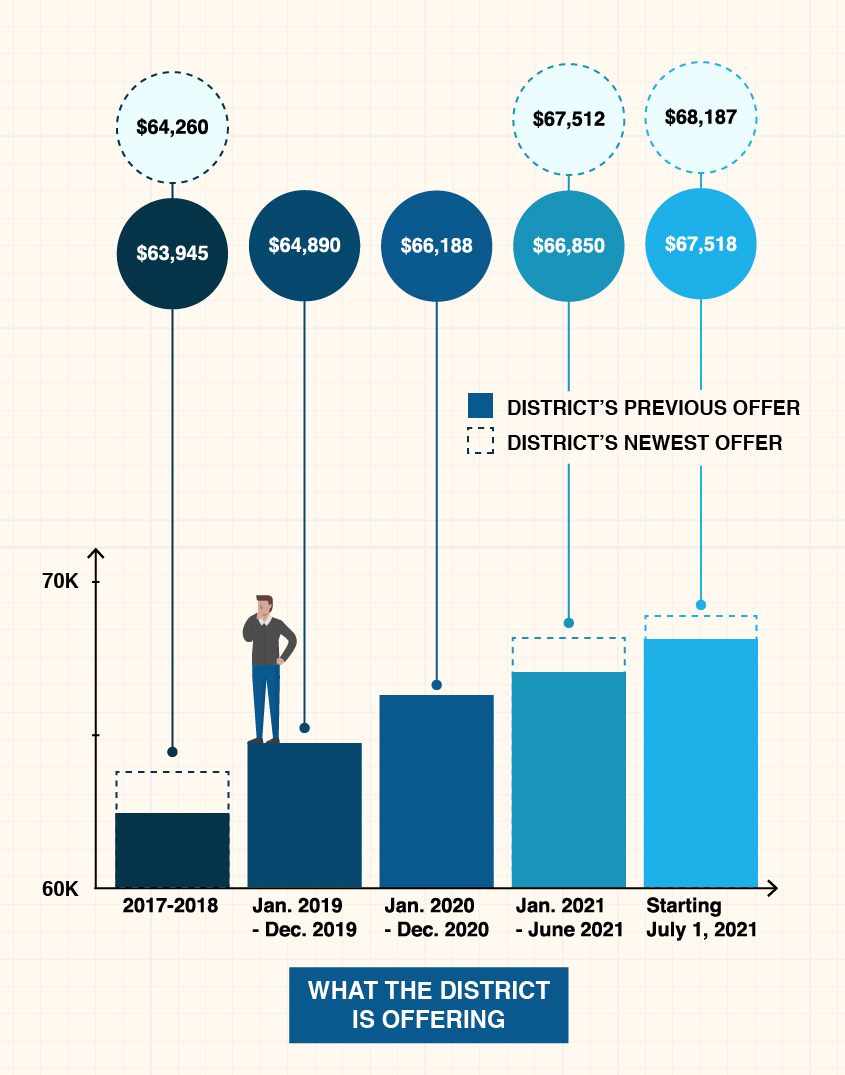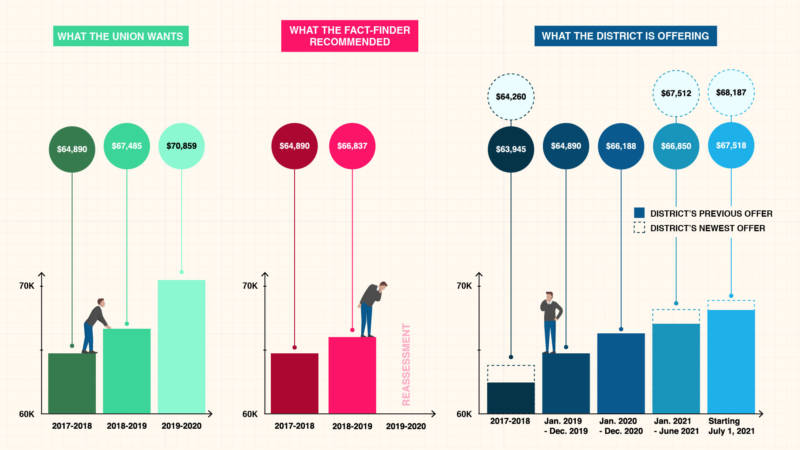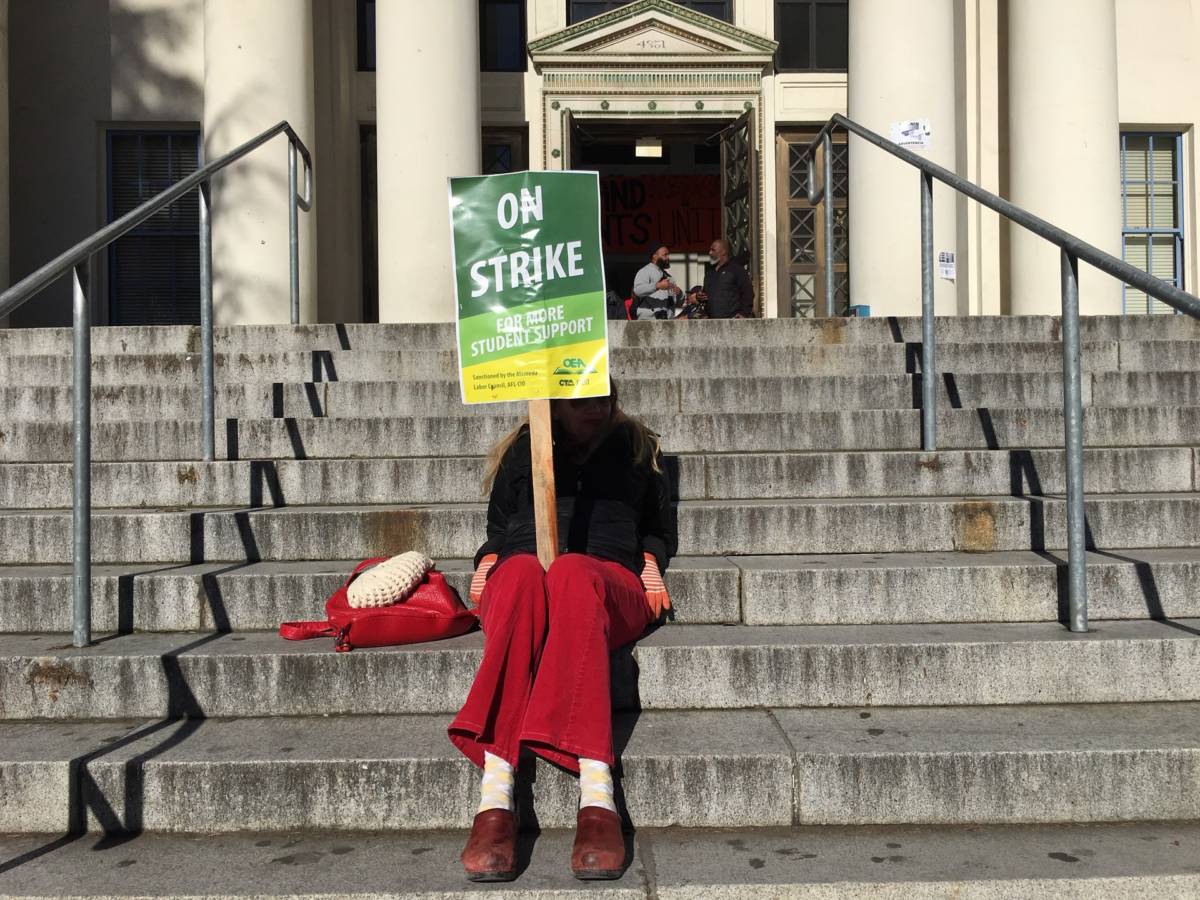But the district, which is trying to cut next year’s budget by more than $20 million, says it can’t swing that big a pay bump for its 3,000 teachers, nurses and counselors. Initially, the district offered teachers a 5 percent raise over three years, less than half of what they wanted.
The week before teachers went on strike, a neutral fact-finder weighed in. He agreed that the financially strained district couldn’t afford the 12 percent increase over three years that teachers were asking for, but he also noted that the 5 percent bump the district had initially offered would fail to keep pace with inflation. The fact-finder suggested a compromise of a 6 percent pay increase over just two years (not three), beginning in July 2017. The third year would be left open to reconsideration, with the hope that additional state funding would become available to continue the same rate of increase. That proposal looks like this:
- 2017-2018: 3% increase
- 2018-2019: 3% increase
- 2019-2020: Reconsider increased rate
So, under this proposal, here’s how Mr. Jones’ salary would increase:
- 2017-2018: $63,000 + (3% of $63,000) = $64,890
- 2018-2019: $103 + (3% of $64,890) = $66,837
- 2019-2020: Reconsider

The teachers union said the fact-finder's proposal, while better than the district’s initial proposal of 5 percent over three years, still didn’t go far enough.
In last-minute negotiations with the union on the day before the strike started, the district made a counteroffer to increase teachers' pay by 7 percent over three years, starting in January 2019.
In a Feb. 20 press release, the district said: “Overall, OUSD’s proposal either meets or exceeds the recommendations provided by the fact-finder’s report. For example, the report recommends a 6 percent on-going raise while the district’s proposal is a 7 percent on-going increase and a 1.5 percent bonus.”
But that claim is highly debatable.
For one, it's a tricky apples-to-apples comparison to make, because the district's proposed schedule of increases is different from that proposed by the union and the fact-finder. Here’s how it would break down:
2017-2018: 1.5% bonus (that means a one-time deal, not part of the pay schedule).
- Jan. 2019 - Dec. 2019: 3%
- Jan. 2020 - Dec. 2020: 2%
- Jan. 2021 - June 2021: 1%
- Starting July 1, 2021: 1%
So for Mr. Jones, that would look like this:
- 2017-2018: $945 + $63,000 = $63,945
- Jan. 2019 - Dec. 2019: $63,000 + (3% of $63,000)= $64,890
- Jan. 2020 - Dec. 2020: $64,890 + (2% of $64,890) = $66,188
- Jan. 2021 - June 2021: $105.06 + (1% of $105.06) = $66,850
- Starting July 1, 2021: $106.11 + (1% of $106.11) = $67,518
The latest district offer, announced Wednesday, ups the ante to 8 percent over three years and a 2 percent bonus.
The graph below shows both offers (using a hypothetical increase schedule for the latter one, because the specifics of it have not yet been announced).

“It depends on how you look at it,” said OUSD spokesman John Sasaki, when asked how the district’s proposal compared with the fact-finder's recommendation. “They had 6 percent for two years. We had 7 percent over three, guaranteed, plus the bonus. Straight numbers guaranteed, it’s more. [But] admittedly over a longer time.”
Johanna Langill, a ninth-grade math teacher at Oakland Technical High School, is still not pleased with the district’s latest offer. She said they tried to make it sound much better than it really is.
“It’s sneaky,” she said, while standing on the picket line in front of her school. “We are asking for literally the minimum to stay even with inflation, and they're still not close. So I think it’s pretty insulting.”
She added: “Really what they’re trying to do is lock us into a below-inflation rate of increase for the first year of our next contract.”
Langill said she feels a responsibility as a math teacher to clearly break it down, and is excited to teach a lesson on it to her students — whenever the strike ends.





